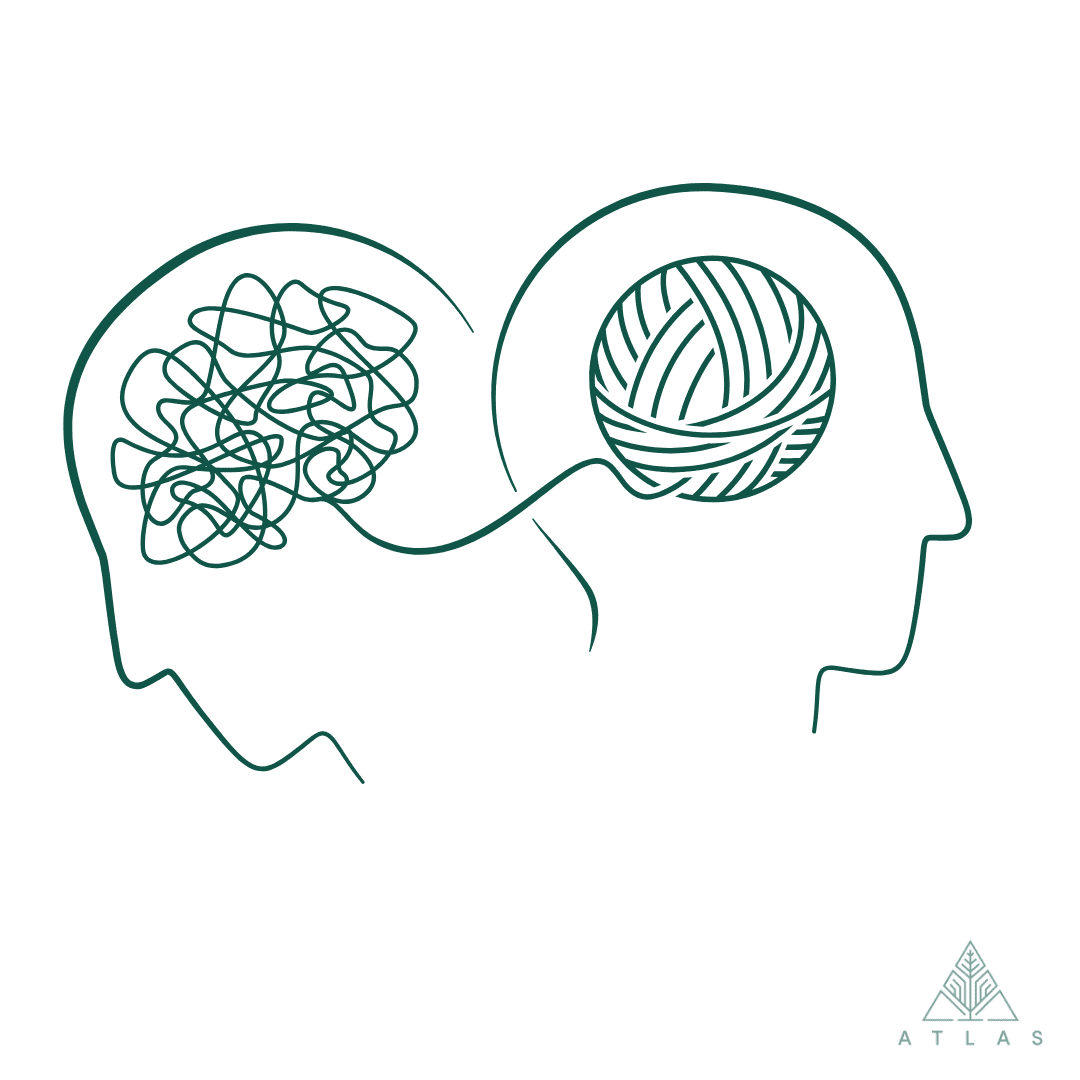Reconnecting in a Disconnected World
Between demanding careers, digital distractions, financial concerns, and the lingering effects of global events, couples are experiencing disconnection at alarming rates. What once felt like a deep bond can gradually transform into two people simply coexisting under the same roof. In today’s fast-paced world, relationships face unprecedented pressures. If you’ve been feeling this distance growing in your relationship, you’re far from alone and there are proven pathways back to connection.

The Modern Relationship Crisis
Recent research paints a concerning picture: according to a 2024 relationship study by the American Association for Marriage and Family Therapy, 67% of couples report feeling “significantly more disconnected” from their partners than they did five years ago. The top reported causes include:
- Chronic stress and burnout (cited by 78% of respondents)
- Technology interference (72%)
- Communication breakdown (65%)
- Unresolved conflict (57%)
- Lack of quality time (52%)
These statistics reflect what many couples therapists are seeing daily: modern relationships are under siege from external pressures that previous generations simply didn’t face in the same way.
Understanding Disconnection: How Stress Affects Relationships
The Stress Cycle in Relationships
When we experience chronic stress, our brains prioritize survival functions over connection. This biological reality creates a challenging cycle:
- External stressors trigger our fight-flight-freeze response
- Our capacity for empathy and patience diminishes
- Communication becomes more reactive and less thoughtful
- Our partner experiences this as emotional unavailability
- They respond with their own protective behaviours
- The distance between partners increases
- This distance itself becomes another source of stress
Without intervention, this cycle can continue until couples feel like strangers to each other, despite sharing a home, finances, and sometimes children.
The Digital Divide
Technology has introduced new complications to relationship dynamics. Consider these findings:
- The average adult checks their phone 96 times daily—approximately once every 10 minutes
- 70% of couples report that one or both partners regularly use phones during conversation
- 35% of couples identify screen time as their most common source of conflict
What makes digital disconnection particularly insidious is how it creates a false sense of connection—we feel engaged with something, just not with each other. The constant dopamine hits from notifications train our brains to seek stimulation from devices rather than partners.
Pandemic Aftereffects

While the acute phase of the COVID-19 pandemic has passed, its effects on relationships continue. Many couples experienced relationship strain during lockdowns that remains unresolved. Others found that returning to “normal” highlighted fundamental differences in values or life goals that had been obscured during crisis management.
Signs Your Relationship is Suffering from Stress-Induced Disconnection
How do you know if stress is damaging your connection? Watch for these warning signs:
- Conversations remain surface-level, rarely moving beyond logistics and scheduling
- Conflicts go unresolved, either through avoidance or circular arguments that never reach resolution
- Physical intimacy has declined significantly compared to earlier relationship stages
- You feel lonely even when together, experiencing what therapists call “emotional isolation”
- One or both partners are increasingly irritable or quick to take offence
- Important life decisions are made individually rather than collaboratively
- You struggle to name your partner’s current stressors or concerns
- Activities are parallel rather than shared, with fewer genuine interactions
If several of these patterns sound familiar, your relationship may be experiencing stress-induced disconnection.
The Changing Landscape of Modern Marriage
Delayed Marriage and Extended Singlehood
Perhaps one of the most significant shifts has been the increasing age at first marriage. In 2000, the median age for first marriage was 26.8 for men and 25.1 for women. By 2023, these averages had climbed to 30.4 for men and 28.6 for women. This shift reflects several important social changes:
- Prioritization of education and career establishment before marriage
- Extended period of self-discovery and personal development
- Greater financial independence for women
- Normalization of living together before (or instead of) marriage
- Less social pressure to marry early or at all
This extended pre-marriage period means that today’s couples often enter marriage with more developed individual identities, established career paths, and financial independence—fundamentally changing relationship dynamics from previous generations.
The Rise of Dual-Career Marriages
While dual-income households existed 20 years ago, today’s marriages are more likely to feature two full careers rather than a primary breadwinner and secondary earner. According to the Bureau of Labor Statistics, in 64% of married couples with children, both parents are employed—often in demanding career paths. This shift has created:
- More complex negotiations around household responsibilities
- New challenges in work-life balance
- Greater financial independence for both partners
- Evolving power dynamics within relationships
- Increased need for communication about priorities and values
Technological Influence
Perhaps no factor has transformed intimate relationships more dramatically than technology. Consider how these developments have affected marriages:
- Dating Apps and Meeting Online: In 2000, online dating carried significant stigma. Today, approximately 40% of heterosexual couples and 65% of same-sex couples meet online. This has expanded the pool of potential partners beyond geographic and social constraints, fundamentally changing how relationships begin.
- Digital Communication: The ubiquity of smartphones means couples now navigate continuous connection possibilities, from text messages throughout the day to video calls during separations. While this creates opportunities for ongoing connection, it also introduces new expectations and potential stressors.
- Social Media: Platforms like Instagram, Facebook, and TikTok have introduced unprecedented visibility into relationships, creating both connection opportunities and comparison traps. Today’s couples navigate questions previous generations never faced: What parts of our relationship should be shared publicly? How do we handle social media boundaries? How do we manage the influence of curated relationship portrayals on our expectations?
Greater Diversity in Relationship Structures
Marriage itself has become more inclusive and diverse in structure:
- Same-Sex Marriage Legalization: The 2015 Supreme Court decision legalizing same-sex marriage nationwide represented a watershed moment in relationship recognition. This legal validation has had ripple effects beyond the LGBTQ+ community, challenging traditional assumptions about gender roles in all marriages.
- Recognition of Various Family Forms: Blended families, chosen families, childfree marriages, and long-distance relationships have gained increased recognition and legitimacy over the past 20 years. This expansion of what constitutes a “normal” relationship has created more space for couples to design partnerships that truly fit their needs rather than conforming to rigid external expectations.
- More Conscious Couplehood: Today’s marriages are more likely to be entered with intentional discussion about expectations, values, and goals. Premarital counselling has increased in popularity, with couples actively seeking to build skills for successful partnerships rather than assuming marriage will naturally work out.
The Impact on Modern Couples
These evolutionary changes create both opportunities and challenges for today’s married couples.
New Sources of Relationship Stress
- Decision Fatigue: With fewer prescribed roles and more options for structuring relationships, today’s couples face a paradox of choice. Everything from surname decisions to parenting approaches to career prioritization requires active negotiation rather than defaulting to social norms.
- Work-Life Balance Struggles: As the boundaries between work and home have blurred—especially accelerated by remote work trends—couples struggle to create clear delineations between professional and personal life. The “always on” work culture collides with relationship needs, creating unprecedented stress.
- Information Overload: Today’s couples are inundated with relationship advice, articles, podcasts, and Instagram infographics about “healthy relationships.” While access to information can be helpful, it can also create anxiety about relationship “performance” and constant comparison to idealized standards.
- Economic Pressures: The financial reality for young couples has changed dramatically, with housing costs, student loan debt, and economic uncertainty creating new strains on relationships. Financial interdependence looks different when both partners enter marriage with significant debt or when homeownership seems perpetually out of reach.
Opportunities for Deeper Connection
Despite these challenges, the evolution of marriage has created remarkable opportunities for more authentic, equitable partnerships:
- Greater Emphasis on Emotional Intelligence: Today’s successful marriages typically feature higher expectations for emotional connection and communication than previous generations. Partners are more likely to expect emotional support, vulnerability, and psychological intimacy—potentially creating deeper bonds.
- More Equitable Partnerships: As traditional gender roles have relaxed, couples have more freedom to allocate responsibilities based on individual strengths, preferences, and circumstances rather than gender-based defaults. This can create more satisfying and fair partnerships.
- Intentional Relationship Design: Modern couples increasingly approach their relationships as co-created endeavours rather than predetermined institutions. This “relationship by design” approach encourages ongoing conversation about evolving needs and expectations.
- Increased Support Resources: The growth of couples therapy, relationship education, and online resources means today’s couples have unprecedented access to tools for strengthening their connections when challenges arise.

Navigating Modern Marriage Successfully
Given these evolutions, what helps today’s couples build thriving partnerships?
Continuous Communication Adaptation
The most successful modern marriages feature ongoing, evolving communication rather than one-time discussions. Regular check-ins about expectations, needs, and satisfaction allow couples to adapt to changing circumstances and growth.
Intentional Technology Management
Couples who develop explicit agreements about technology use tend to report higher relationship satisfaction. This might include:
- Phone-free meals or dates
- Boundaries around work communications during family time
- Agreements about what is shared on social media
- Regular digital detoxes to reconnect
Flexibility in Role Definition
Rather than rigid role divisions, successful modern couples tend to approach responsibilities fluidly, adapting to changing circumstances and needs. This flexibility allows partnerships to weather career changes, health challenges, and other life transitions more successfully.
Commitment to Growth Together and Apart
Today’s marriages benefit from supporting both individual development and relationship growth. Partners who encourage each other’s personal evolution while maintaining their connection demonstrate particular resilience.
Value Alignment and Revisiting
With fewer external structures defining marriage, internal value alignment becomes crucial. Regularly discussing and recommitting to shared values helps couples maintain connection amid diverse influences and options.
The Therapeutic Approach to Modern Marriage
For therapists working with today’s couples, these evolutions necessitate updated approaches:
- Context-Sensitive Support: Effective couples therapy recognizes the unique pressures on modern relationships, from technology challenges to economic stressors to extended family complexity.
- Skills-Based Intervention: Today’s couples often benefit from concrete communication and conflict resolution skills that address their specific challenges, including digital communication mishaps and work-life boundary setting.
- Individualized Relationship Models: Rather than promoting one “correct” relationship structure, modern therapy helps couples design partnerships that honour their unique values, circumstances, and aspirations.
- Integration of Cultural Factors: As marriages become more diverse in structure and composition, culturally responsive therapy approaches recognize the intersection of relationship dynamics with racial, cultural, socioeconomic, and sexual identity factors.

How Couples Therapy Addresses Modern Disconnection
While the challenges facing today’s relationships are significant, couples therapy has evolved to address these specific issues. Modern therapeutic approaches offer evidence-based pathways to reconnection, even for couples who feel they’ve grown irrevocably apart.
Emotionally Focused Therapy (EFT)
EFT, developed by Dr. Sue Johnson, focuses on restructuring emotional responses and attachment patterns between partners. This approach has demonstrated remarkable success, with research showing about 70-75% of couples moving from distress to recovery and 90% showing significant improvement.
EFT helps couples:- Identify their negative interaction cycles
- Access and express underlying emotions that drive reactive behaviours
- Create new patterns of secure emotional connection
- Build resilience against external stressors
The Gottman Method
Based on over 40 years of research by Drs. John and Julie Gottman, this approach focuses on strengthening what they call the “Sound Relationship House”—nine components of healthy relationships including trust, commitment, and shared meaning.
The Gottman Method is particularly effective at:- Teaching stress-reducing conversation techniques
- Building skills for managing conflict productively
- Creating rituals of connection that withstand external pressures
- Helping couples support each other’s life dreams and goals
Mindfulness-Based Couples Therapy
Incorporating elements of mindfulness practice, this approach helps couples develop present-moment awareness and intentionality in their interactions.
Benefits include:- Reduced reactivity during difficult conversations
- Greater capacity to listen without immediately responding
- Increased awareness of one’s own emotional patterns
- Ability to pause before communication escalates negatively
Practical Strategies from Couples Therapy You Can Start Today
While professional guidance offers the most comprehensive path to reconnection, these therapist-recommended strategies can help begin the process:
- Create Device-Free Zones and Times: Designate specific spaces (particularly the bedroom) and times (such as dinner) as completely technology-free. This simple boundary can dramatically increase quality interaction.
- Institute a Daily Stress-Reduction Conversation: Set aside 20 minutes each day where each partner gets 10 minutes to talk about their stressors—with an important caveat: the stress being discussed cannot be about the relationship. This helps partners support each other with external challenges without immediately triggering defensive responses.
- Schedule Connection Time: In busy lives, unscheduled connection rarely happens. Treat relationship time with the same commitment you give to work meetings by actually scheduling it in your calendar.
- Practice Emotional Attunement: Take turns asking: “What’s happening for you right now?” or “What do you need from me today?” These questions signal interest in your partner’s inner world and create opportunities for meaningful connection.
- Develop Stress-Management Rituals: Create shared rituals for managing stress, whether it’s a weekly hike, a monthly day trip, or even just a five-minute breathing exercise you do together each morning.

When to Seek Professional Help
While self-help strategies can improve mild disconnection, certain situations particularly benefit from professional guidance:
- When the same conflicts arise repeatedly without resolution
- When one or both partners feel consistently misunderstood
- When there’s been a significant breach of trust
- When communication attempts regularly end in heightened conflict
- When external stressors (job loss, illness, etc.) have overwhelmed your coping resources
- When you feel like roommates rather than partners
The Courage to Reconnect
Reaching out for couples therapy doesn’t indicate failure—it demonstrates commitment to your relationship’s growth and resilience. In fact, research shows that couples who seek therapy proactively often achieve the strongest outcomes.
The average couple waits six years after problems begin before seeking help. By then, negative patterns have become deeply entrenched and are harder to shift. Couples who address disconnection earlier typically require fewer sessions and experience more lasting improvement.
Moving Forward Together
Today’s relationship challenges require intentional strategies and sometimes professional guidance. The good news is that the same research highlighting these challenges also shows that couples can rebuild connection even after significant periods of distance.
With the right support, partners can move from disconnection to a relationship that actually serves as a buffer against life’s stresses—providing sanctuary rather than additional strain. The science of relationships has never been more advanced, offering proven pathways back to the connection you once shared and forward to a resilience you perhaps never imagined possible.
